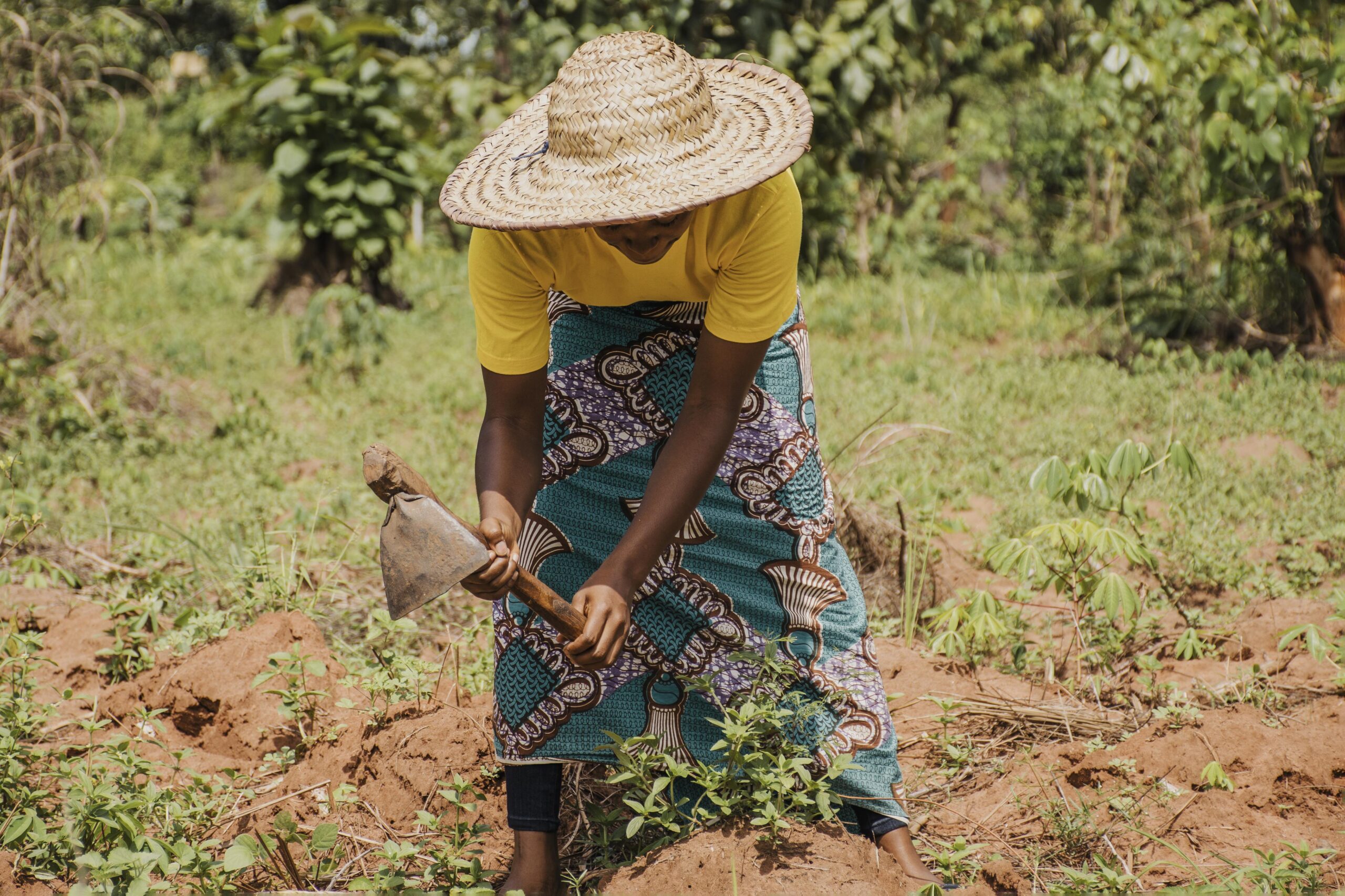The smile that beams up the face of a 65 year old woman in an inner village in the south eastern part of Nigeria at the sight of her grandchildren holding out batteries to power up her portable radio reflects not only the joy in receiving gifts but also that of staying connected to the world. Though old and small with numerous constraints, her radio gives her access to local and a few times, global news. This is different for her counterparts in an urban elite area, who have access to television, other digital gadgets, social media and numerous local and global news channels.
Categorising the rural area as the vast majority who are barely surviving, White (2008) opines that there is a clear difference between the latter and modernised areas in terms of communication while naming the assorted means available to promote communication in the modernised area. Genç (2017) described these means as tools that enable expression in sustainable development.
The usefulness of a well is known when it dries up
Fortunately, there is no cause for alarm as the world caught hold of the important role of grassroot in participatory intervention for development. Ibrahim (2017) asserts that through grassroot projects, different levels of non-governmental organisations and other donor organisations improve the impact of development work. Servaes (2007) states that these projects can only birth social change with appropriate communication dialogue. Reflecting on the above, it is without a doubt that to attain development there is a need for grassroot participation, which can be influenced by its access to information and opportunities created to hear its voice as well.
Ate and Ikerodah (2012) in their journal Community Journalism in Nigeria, recommended the need for professionals to support the growth of ICT in the grassroot Nigeria. Their recommendation portrays the poor access to communication on the grassroot level in Nigeria which is also the same case for other African countries as this condition tends to halt development, thus isolating rural areas in the past. The question is, with the limited access to means of communication, how can the grassroot gain and digest information as well as express their views and interest?
Power to Communication… Power to Development
McPhail (2009) qualified participatory communication as a strategic intervention while highlighting its aim as the influence of the people on development through communication. The author further posits that the new wave of information communication technology created a platform for grassroot to thrive in the role of change or making impact. While dwelling on the understanding of participatory communication, it is important to refresh the mind with the fact that freedom of expression is a fundamental human right. Green (1960) introduced ‘right to communicate’ as “the right to give and the right to receive information and ideas; the right to advocate, teach and write; the right to hear, read, reply and reject.” With these, one can deduce that having access to various means of communication would not only provide the grassroot with all deserving rights, but enhance its effectiveness in supporting the goal of national development.
Reflecting on a solution to enhance communication barriers, the concept of communication for development comes to play. A concept that implements strategies to satisfy the communication demands of different levels including grassroot, thereby bridging the unequal communication gap between the disadvantaged (those with limited access to means of communication) and advantaged (those with access to variety of means), while ensuring smooth and even flow of ideas and information on politics, economy, social, policy and other developmental aspects (Inagaki, 2007).
Buttressing the effect of these strategies, Inagaki’s (2007) interpretation of the communication strategy named group communication shows that participatory intervention does more than highlight information or ideas. However, it also creates an equal opportunity platform whereby people of different socio-economic backgrounds can team up to proffer solutions to known challenges.
The hurdles of participatory communication
Hurdles obstruct and even participatory communication does not defy the obstruction. The successful implementation of participatory intervention is challenged by various issues; however, this writeup would be discussing three key issues as they are easily perceived. While stating the colonial government’s intent of wielding power over the grassroot, White (2008) argued that Top Down is presently the basic strategy of communication, the writer further pointed out that the major aim of such strategy is to silence the voice of the people. The top down strategy evidently does not give opportunity for the grassroot to express their needs, perspective, ideas or choices towards decision making; hence, it goes against the idea of participatory communication.
In addition, as much as NGOs and other donor bodies commit to building development through participatory communication, their processes, problem solving strategy and list of intervention may be designed by high technical experts and as Waisbord (2008) stated technical ideas are chosen over the ideas of others and this aspect could create opportunity for institutional predominance. The voice or feedback of the grassroot may be seen as unprofessional. Also, the process at which participatory communication is implemented may be fully influenced by experts who are not members of the community communication team. Waisbord (2008) cited an example of how communication staff members do not have sole power in making decisions concerning the participatory strategy they intend to work with as the strategy is reviewed by a higher power. Ebo, Amosa, and Adenusi (2012), also emphasised a major hurdle in developing communication in rural areas is the manpower, as many grassroot dwellers have a poor grasp of communication technology and the unwillingness of skilled individuals to move from urban to rural areas, which could be due to poor incentives, low standard of living and so on (as low urban-rural migration is another issue on its own).
Nevertheless, Tufte and Mefalopulos (2009) argue that the intent of ensuring that accurate information is disseminated may be disregarded as it is easy to focus purely on building a team for problem solving without arming them with the right information for more effective participation. Also, in building a team, other important voices that are marginalised like the women and young people may not have the opportunity of being part due to customs and traditions (White 2008).
The practical implication
When we discuss the impact of improving communication service in the grassroot or rural communities, its impact can be boundless. Several researchers have given their take on the implications. Owo (2010) said it best when he mentioned that communication development bridges the digital divide between rural and urban areas.
Generally, the practical implication can be both short term and long term. In relation to short term implications, it improves connectivity among individuals, and by extension, among communities. Another major short term implication is on the dissemination of information. This is related to Article 19 of the United Nations’ Universal Declaration of Human Rights (1945) which emphasises the importance of information as a fundamental human right under the rights to freedom of opinion and to seek for information. This in turn will increase the knowledge base in the society. This is further explained by Kari (2007) on how proper and adequate communication services is an important key to distributing important and required information as the impact of continuous communication across communities broadens individuals’ minds.
An article by Ekoh, George, and Ezulike (2021) also states that a majority of the older people’s population in Nigeria live within grassroot communities and thus are most times separated from their families. Thus, improving communication in these areas and other urban cities, according to Lee and Shehan (1989), improves the self-esteem of older people with social relations which are improved by technology focused on communication services.
A major long term implication of the development of a grassroot communication service is the major increase in business and the economy. According to the World Bank Group (2012), communication technology accounts for a major growth in productivity and accelerating economic growth in any society despite its status.
Article contributed by Obianujunwa Umahi.
Photo from Freepik.
References
Ate, A. and Ikerodah, J., 2012. Community journalism in Nigeria: Global technological reflections. New Media and Mass Communication, 2, pp.52-59.
Ebo I. O, Amosa B. M. G, and Adenusi D.A., 2012. Information and Communication Technology (ICT), and Rural Development in Nigeria, International Journal of Science and Advanced Technology (ISSN 2221-8386)
Ekoh, P. C., George, E. O., & Ezulike, C. D. 2021. Digital and Physical Social Exclusion of Older People in Rural Nigeria in the Time of COVID-19. Journal of gerontological social work, 64(6), 629–642.
Genç, R., 2017. The importance of communication in sustainability & sustainable strategies. Procedia Manufacturing, 8, pp.511-516.
Green, L., 1960. The Right to Communicate. NYUL Rev., 35, p.903.
Ibrahim, S., 2017. How to build collective capabilities: The 3C-model for grassroots-led development. Journal of Human Development and Capabilities, 18(2), pp.197-222.
Inagaki, N. ed., 2007. Communicating the impact of communication for development: Recent trends in empirical research.
Kari, H. K. (2007). Availability and accessibility of ICT in the rural communities of Nigeria. The Electronic Library, 25(3), 363-372.
Lee, G. R., & Shehan, C. L. (1989). Social relations and the self-esteem of older persons. Research on aging, 11(4), 427–442.
McPhail, T.L. ed., 2009. Development communication: Reframing the role of the media. John Wiley & Sons.
OJO, J.S., 2014. E-governance: An imperative for sustainable grass root development in Nigeria. Journal of Public Administration and Policy Research, 6(4), pp.77-89.
Owo, N. J. (2010). Gender and development: Nigeria as a case study. Journal of Sustainable Human Development Revision, 2, 81-91.
Servaes, J. ed., 2007. Communication for development and social change. SAGE Publications India.
Tufte, T. and Mefalopulos, P., 2009. Participatory communication: A practical guide (Vol. 170). World Bank Publications.
Tufte, T. and Mefalopulos, P., 2009. Participatory communication: A practical guide (Vol. 170). World Bank Publications.
United Nations, 1948. Universal Declaration of Human Rights.
Waisbord, S., 2008. The institutional challenges of participatory communication in international aid. Social identities, 14(4), pp.505-522.
White, R.A., 2008. Grassroots, participatory communication. African communication research, 1(1), pp.1-137.
World Bank Group. 2012. Gender equality and development. Retrieved on 10 November 2022 from https://siteresources.worldbank.org/INTWDR2012/Resources/7778105-1299699968583/7786210-1315936222006/Complete-Report.pdf

